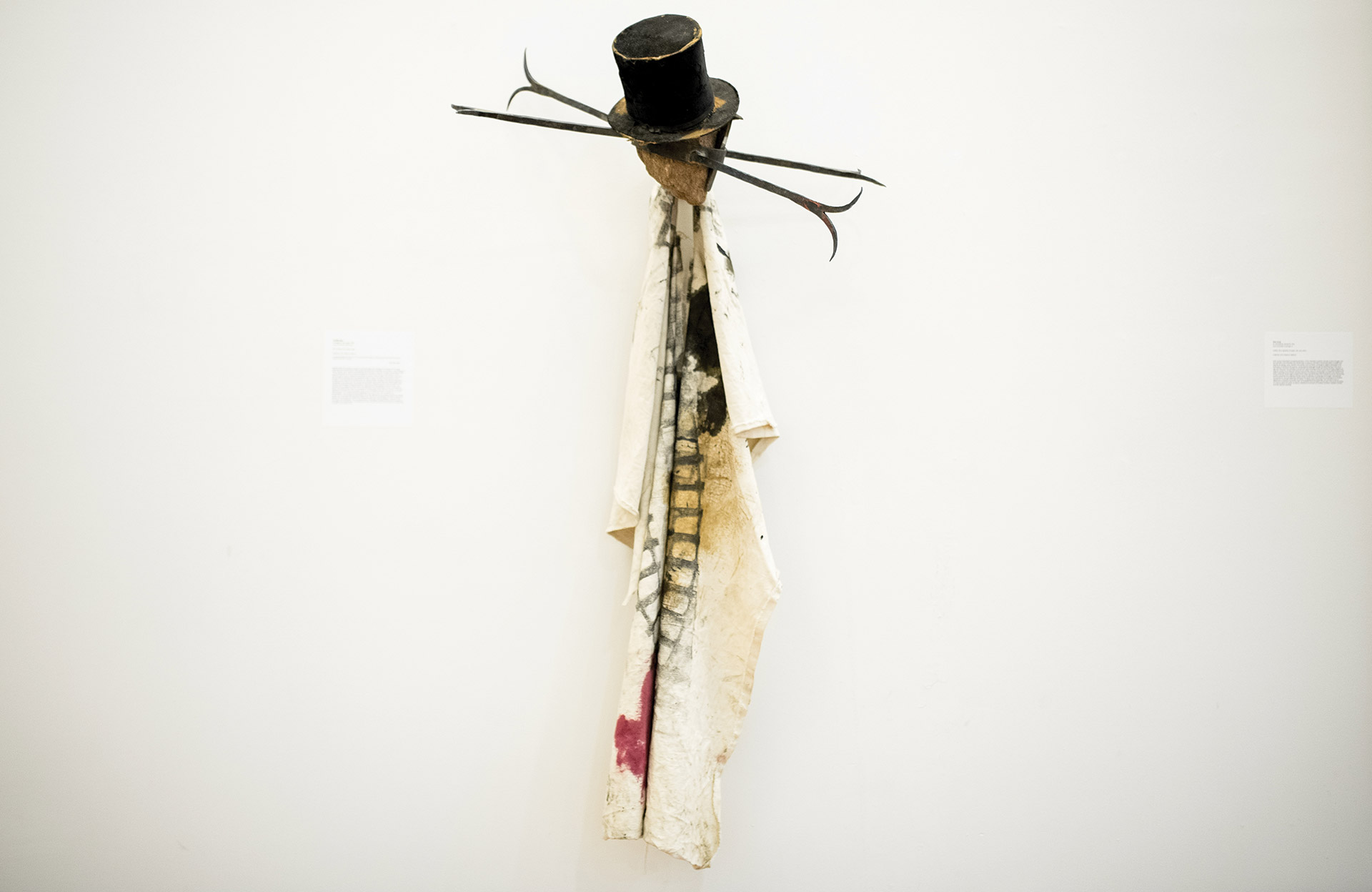 Radcliffe Bailey
Radcliffe Bailey Radcliffe Bailey
(b. Bridgeton, New Jersey 1968)
Lives and works in Atlanta, GA
Zion Crossing, 2016, mixed media
Collection of Dr. Robert B. Feldman
I’ve always felt like the only way I can heal myself throughout certain things is to go back through my memory, learn from memory. —Radcliffe Bailey
Radcliffe Bailey has created a sculptural wall assemblage, Zion Crossing that is layered with complex meaning and powerfully imbued with a sense of gravitas that is immediate, and somber. Long interested in history, ancestry, race, memory, and especially the crossroads in which all converges and diverges, Bailey conveys the burden of African American experience, the trauma of history, and the imprint it has on personal memory and our collective construction of memory—and its weight. The symbolic power lies in the way Bailey conjures journeys and fragmented paths of space and time in liminal space, as the in-between, to hold meaning and metaphor for our various crossings. The figure, shrouded and enslaved in cruciform, dons a historic stove top hat with an iron pronged slave collar that casts shadows reflecting a constellation at the crossroads, crowning the bowed head. Reflecting transition from the earthly to the heavenly, the interstellar, the figurative gesture, despite its heaviness suggests a spiritual ascent. The movement from a biblical promised land, to the deportation and enslavement of Jews, a homeland in Africa, Trans-Atlantic Slave Trade, to a metaphor for Christian black slaves after the Civil War, to the many migrations to the North from the American South, to the Civil Rights Movement, and lastly to our current time and place, the wandering and the longing slips in and out of time, yet is so present—as transcendence. The crossings and intersections are further reflected on the hanging, stained and draped canvas with a motif repeated throughout Bailey's work, train tracks that represent the literal movement of peoples, the construction of America, the Underground Railroad, a path to freedom, a way out of Jim Crow South, and mobilization. The cumulative power of associative materials and the built composition is in homage to an ancestral past, a transference for pain, mournful account for lives and loss, but also heeds warning in our precarious now.